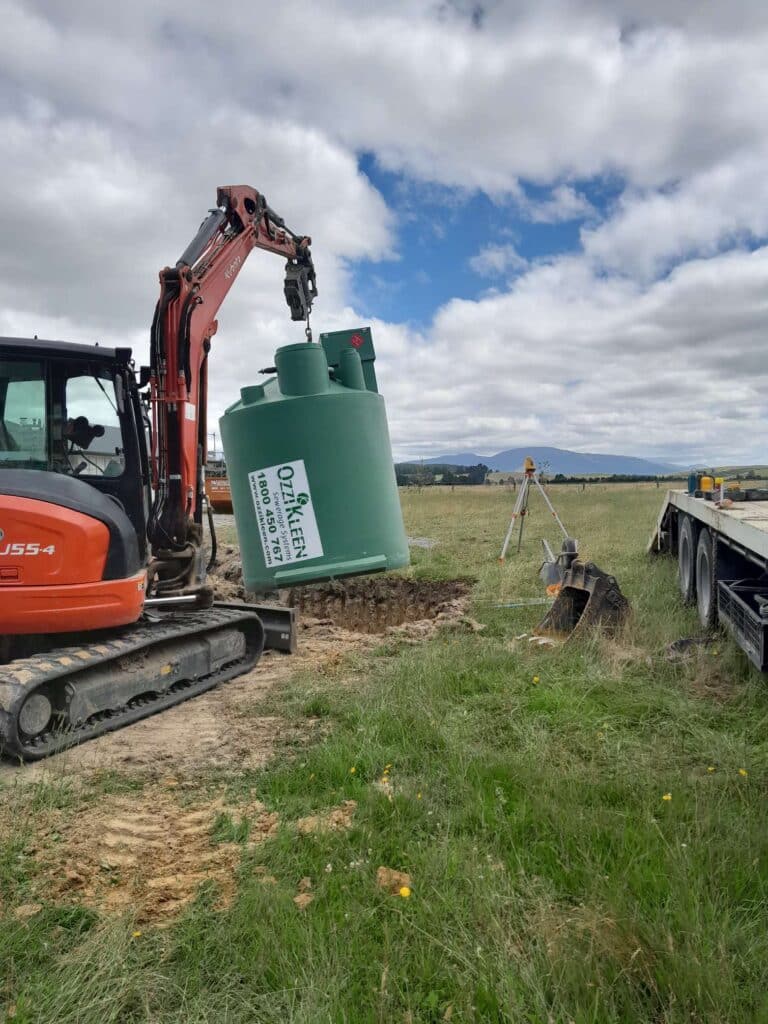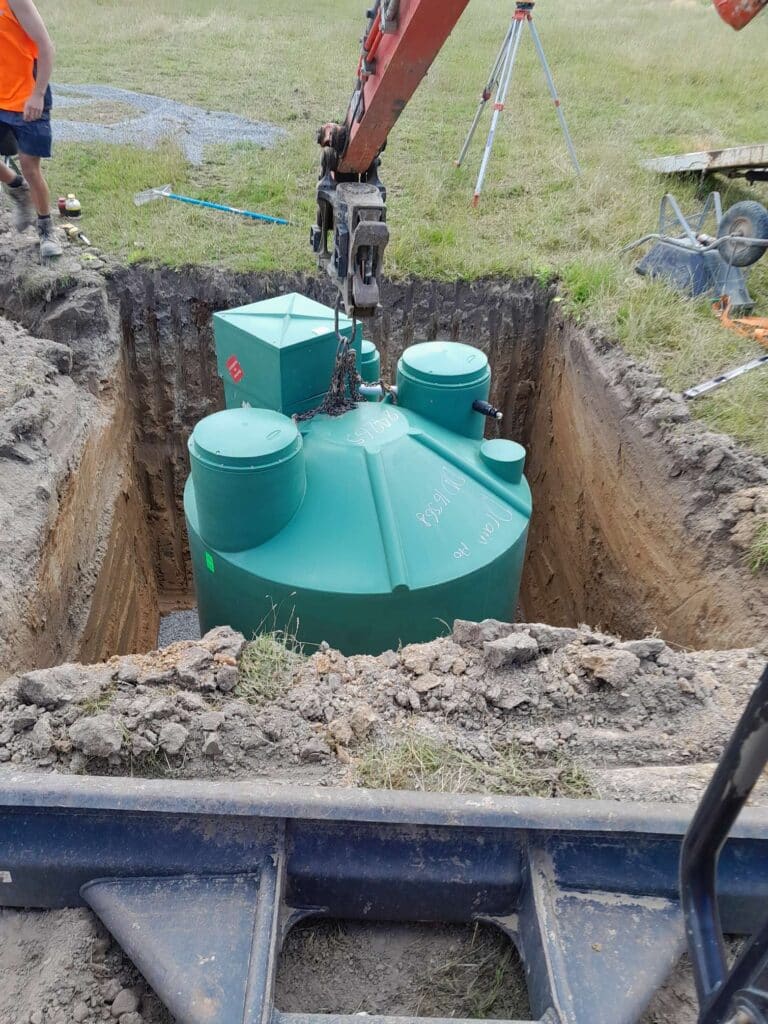If you’re living on the outskirts of Hamilton or own a lifestyle block in the Waikato region, chances are you rely on a septic tank system. While they often go unnoticed when working properly, septic tanks are crucial to the health, hygiene, and compliance of your property. But like any infrastructure, they don’t last forever. Recognising the early signs that your system is due for replacement can save you thousands—and a whole lot of hassle.
Why Septic Tank Health Matters for Hamilton Property Owners
The Role of Septic Systems in Hamilton’s Rural and Lifestyle Blocks
In many parts of Hamilton, especially rural and semi-rural zones like Tamahere, Gordonton, and Ngāruawāhia, mains sewerage services aren’t available. In these areas, septic tanks are the primary means of wastewater disposal. They treat and disperse everything from toilet waste to greywater from sinks and showers.
A well-functioning septic system helps protect local groundwater, ensures the comfort and safety of your household, and prevents environmental contamination. But when systems start to fail, the effects are often immediate, unpleasant, and expensive—making early action vital.
Risks of Delaying Septic Tank Replacement
Putting off a failing septic tank can lead to a cascade of issues. As waste builds up or leaks out, it can contaminate soil, harm native bush, or even impact nearby waterways—a serious issue in Waikato’s environmentally sensitive areas. From a legal standpoint, the Hamilton City Council and Waikato Regional Council require that on-site wastewater systems remain compliant.
A malfunctioning or outdated septic tank could put you in breach of local bylaws and result in fines or denied consents for renovations or subdivision. The longer you wait, the more damage is done—both to your land and your wallet.
Top Signs Your Hamilton Septic Tank Needs Replacing
Frequent Backups and Slow Drains
If you’re noticing that your sinks, toilets, or showers are draining slowly, this could be an early warning sign. Many Hamilton homes with older concrete or steel septic tanks begin to struggle under modern water use levels. What starts as occasional sluggish drainage can quickly escalate to full-blown system backups, especially after heavy rain or during high-use periods like holidays.
Foul Smells Around the Tank or Drainfield
Unpleasant odours near your septic tank, vent pipes, or drainfield area are never a good sign. A properly working system should keep smells contained underground. If you’re picking up strong sewage smells outdoors, it could mean a leak or overflow has occurred—an indicator your tank is failing or undersized for your current needs.
Pooling Water and Soggy Ground
Hamilton’s clay-heavy soils don’t drain as freely as sandy ones. If your yard suddenly has soggy patches or water pooling near the tank or drainfield, it could be due to system overflow. This might be caused by clogs, tank cracks, or simply a system at the end of its life that can no longer handle daily flow. Left unchecked, this can lead to surface effluent and environmental contamination.
Sewage Backing Up Into the House
This is the most urgent red flag. If you’re experiencing sewage backing up into your home, especially in lower-level showers or drains, it’s a critical sign that the tank is either blocked, collapsed, or beyond capacity. Immediate professional assessment is essential, and in most cases, you’ll be advised to install a new septic tank immediately.
Lush, Green Patches Over the Drainfield
While a green lawn is generally good news, overly lush growth over your septic drainfield could indicate leaking effluent. Nutrient-rich waste water can cause rapid plant growth in specific patches, which may mean the field is saturated or the tank is leaking into the soil unevenly. This is a subtle but clear sign that your system may need replacing.
Age of Your Existing Septic Tank
Most septic tanks last 20–30 years, depending on material, usage, and maintenance. If your tank was installed prior to the 2000s, it may not meet current performance standards. Older steel tanks are prone to rust and collapse, while concrete tanks can crack or degrade with age. In many Hamilton properties, age alone is a reason to plan a new installation before problems emerge.

Hamilton-Specific Factors That Accelerate Septic Tank Failure
Waikato’s High Water Table and Soil Conditions
Parts of the Waikato region are known for their high water table, especially during the wet season. This can affect how well drainfields disperse water and may place added pressure on tanks. Additionally, Hamilton’s compacted clay soil slows down drainage, meaning older systems that worked well years ago may now be ineffective or overloaded.
Increased Water Usage in Growing Households
As families grow or properties are extended, septic tanks often get left behind. Adding an ensuite, sleepout, or even a larger washing machine increases daily wastewater output. If your household has grown but your tank hasn’t, it may now be too small to cope, resulting in more frequent problems and a higher risk of failure.
Why Replacing Your Septic Tank Is a Smart Long-Term Move
Protecting Your Hamilton Property Investment
A new septic tank might not be the most exciting home upgrade, but it’s one of the most important. Replacing an outdated system helps you avoid property damage, environmental fines, and potential health hazards. It also adds value to your home—especially important if you’re planning to sell or subdivide.
Staying Compliant With Hamilton City Council Regulations
Council regulations around on-site wastewater treatment have tightened in recent years. New tanks must meet specific design, treatment, and dispersal standards. A new system helps you stay compliant and avoids hiccups when applying for building consents or selling your property.
Boosting System Efficiency and Eco Performance
Modern septic systems are a leap ahead of their older counterparts. Many now include aeration systems, filtration units, and sensors that alert you to issues before they become emergencies. These newer systems are more efficient, use less power, and are designed to protect Hamilton’s groundwater and surrounding environment.
Planning for a New Septic Tank Installation in Hamilton
When to Contact a Local Installer
If you’re noticing any of the signs mentioned above, it’s a good idea to get in touch with a licensed Hamilton-based septic tank installer. They can carry out a system inspection, recommend the right size and type of tank for your property, and give you a detailed quote. Look for companies familiar with Waikato soil types and council processes.
What to Expect From the Installation Process
The process begins with a site evaluation and soil percolation test, followed by council consent applications. Once approved, your old tank is decommissioned, and the new system is installed—usually involving excavation, tank placement, pipe connections, and drainfield construction. The job wraps up with testing and commissioning to ensure everything meets local regulations.
Don’t Wait—Know the Signs and Act Early
Living in Hamilton comes with many lifestyle benefits, but it also means being responsible for your own wastewater system. Whether you’re seeing slow drains, pooling water, or just know your system is ageing, don’t wait for a crisis. Replacing your septic tank proactively ensures a safe, hygienic, and regulation-compliant property for years to come. If you’re unsure where your current system stands, reach out to a local expert for a full assessment—you’ll thank yourself later.




